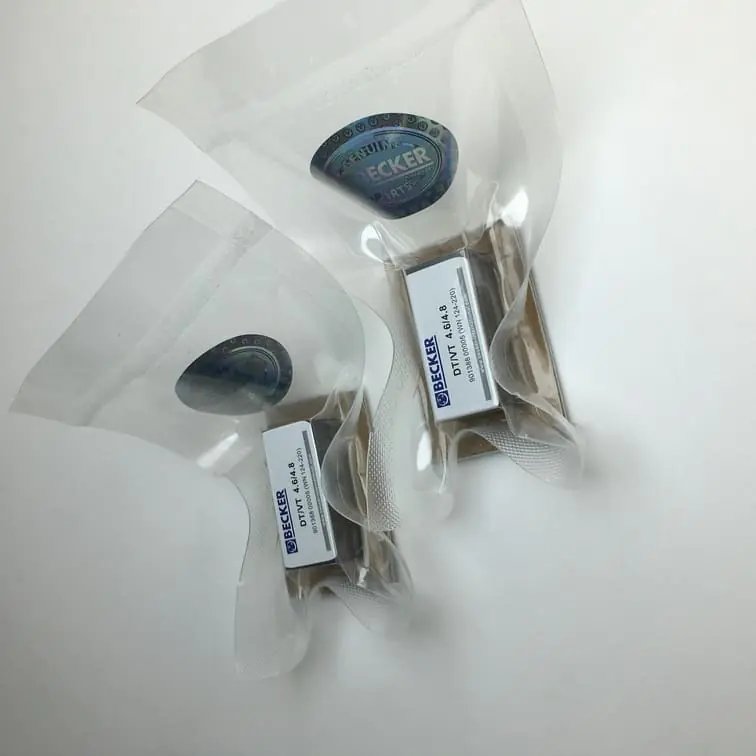An engine vacuum pump is a crucial component in many modern automotive systems, particularly in vehicles that utilize forced induction or feature multiple vacuum-controlled devices. The vacuum pump ensures that adequate levels of vacuum are generated to power different systems, including the brake booster, HVAC systems, and turbocharger wastegates. This article will provide an in-depth look at what an engine vacuum pump is, how it works, and why it’s so important.
Understanding the Basics of an Engine Vacuum Pump
A vacuum pump is a device that creates a vacuum, or negative pressure, which is used to operate various systems in an internal combustion engine. Historically, most vehicles used the vacuum produced naturally by the engine itself to supply vacuum to systems like power brakes. However, with changes in engine design, particularly with the widespread adoption of turbochargers, a separate pump became necessary to provide consistent vacuum levels.
The vacuum pump plays a key role, particularly in engines that have fewer natural vacuum sources, such as turbocharged or diesel engines. These engines don’t produce as much vacuum on their own, making the need for an auxiliary vacuum pump essential.
How Does an Engine Vacuum Pump Work?
The primary function of an engine vacuum pump is to produce a steady supply of vacuum pressure. Here’s how it generally works:
- Mechanical Drive: In many vehicles, the pump is driven mechanically off the engine, either via a belt, the camshaft, or directly off the crankshaft.
- Electric Pump: Some modern vehicles use electric vacuum pumps, which offer more flexibility as they are not dependent on engine speed for vacuum production.
- Operating Components: The pump has a set of vanes or rotors that spin, creating a difference in air pressure. As the vanes rotate, they create a suction effect that pulls air from connected systems, thereby reducing the pressure and creating a vacuum.
The vacuum pump’s role is to ensure consistent operation of systems like:
- Brake Booster: Assists in providing a power-assisted braking experience.
- Emission Control Devices: Supports elements like the EGR valve by ensuring adequate vacuum is available.
- Turbocharger Wastegates: Controls the boost pressure generated by the turbocharger.
For high-quality carbon vanes for vacuum pumps, visit Vacuum Pump Spare Parts.
Types of Engine Vacuum Pumps
There are two main types of vacuum pumps used in automotive applications:
1. Mechanical Vacuum Pumps
These pumps are driven directly by the engine. They have rotating parts, such as carbon vanes, that produce suction as they spin.
- Rotary Vane Pumps: The most common type used in vehicles today, rotary vane pumps feature a series of vanes that move in and out of slots, creating varying air pressure zones.
- Diaphragm Pumps: These use a diaphragm to displace air and create a vacuum. Diaphragm pumps are more common in older or niche applications but are still quite reliable.
For reliable rotary vane parts, see our Original Becker Set of 5 Vanes.
2. Electric Vacuum Pumps
Electric pumps are becoming more common in newer vehicles due to their efficiency and adaptability.
- Advantages: The primary advantage of electric pumps is that they can provide vacuum on demand, regardless of engine speed. This is particularly helpful in hybrid or stop-start systems, where the engine might not always be running.
- Energy Efficiency: These pumps are controlled by the vehicle’s ECU, ensuring they operate only when needed, which helps reduce fuel consumption.
Key Benefits of Using an Engine Vacuum Pump
Engine vacuum pumps offer several important benefits that enhance vehicle performance and safety:
- Brake Assistance: Without an adequate vacuum, braking systems would become much harder to operate, leading to increased braking distances and driver fatigue.
- Consistent Engine Performance: By ensuring vacuum is always available, the pump helps stabilize engine idle and ensures consistent operation of vacuum-driven components.
- Supports Turbocharged Engines: Vacuum pumps are particularly important for turbocharged engines, which don’t produce natural vacuum at times due to the pressurized intake systems.
Common Signs of a Failing Vacuum Pump
Like all components in an engine, vacuum pumps are susceptible to wear and tear. Here are some common signs that a vacuum pump may be failing:
- Hard Braking: If the brake pedal becomes unusually hard, it may be a sign that the vacuum pump isn’t providing adequate pressure to the brake booster.
- Check Engine Light: Many modern vehicles will trigger the Check Engine Light if there is insufficient vacuum for certain components.
- Hissing Noise: A vacuum leak often produces a distinct hissing sound, indicating that air is escaping from the vacuum system.
Vacuum Pumps in Diesel vs. Gasoline Engines
Diesel Engines
Diesel engines almost always require a separate vacuum pump because they operate on a principle that does not produce a natural intake vacuum, unlike gasoline engines.
- Mechanical Pumps: These are usually attached to the camshaft and are used to provide vacuum for brakes and EGR (exhaust gas recirculation).
Gasoline Engines
Gasoline engines, particularly naturally aspirated ones, typically produce their own vacuum. However, with increased use of turbocharging and downsizing, auxiliary vacuum pumps are becoming more common even in gasoline engines.
Need replacement parts? Check out the Original Becker Set of 10 Vanes.
How to Maintain an Engine Vacuum Pump
Maintaining your engine vacuum pump is key to ensuring longevity and effective performance. Here are some maintenance tips:
- Regular Inspection: Check for leaks, wear, and damage in the hoses and connections. Vacuum leaks can lead to a number of engine performance issues.
- Replace Worn Parts: Vanes and other moving parts wear down over time. It’s important to replace these parts with genuine components to maintain efficiency.
- Oil Maintenance: Many vacuum pumps are lubricated by the engine oil system. Make sure to use the manufacturer-recommended oil and replace it at proper intervals.
Vacuum Pumps and Emission Control
Vacuum pumps also play a critical role in emission control. They help drive various systems that reduce emissions, like the EGR valve, which recirculates exhaust gases to decrease nitrogen oxide emissions.
Role in EGR Systems
- The EGR valve requires a reliable vacuum to function correctly. The pump ensures that even when the engine is under load, the valve can operate effectively.
Impact on Fuel Efficiency
- Ensuring all vacuum-dependent components are functioning properly means the engine runs more efficiently, leading to better fuel economy and lower emissions.
Selecting the Right Vacuum Pump for Your Vehicle
Choosing the right vacuum pump for your vehicle depends on several factors:
- Vehicle Type: Different vehicles, like passenger cars, trucks, and heavy-duty diesel vehicles, have specific requirements.
- Type of Engine: Diesel engines have different vacuum requirements compared to gasoline engines.
- Application Needs: Whether your main need is efficient braking or supporting turbocharger functions, select a pump that meets those specific demands.
For further details on vacuum pump applications and spare parts, visit our Vacuum Pump Spare Parts page.
FAQs
1. What does an engine vacuum pump do?
An engine vacuum pump creates vacuum pressure for various engine components, such as the brake booster and emissions control systems, to ensure efficient operation.
2. How do I know if my vacuum pump is failing?
Signs of a failing vacuum pump include hard braking, a check engine light, or a hissing sound caused by leaks.
3. Are electric vacuum pumps better than mechanical ones?
Electric vacuum pumps offer several advantages, such as being more efficient since they can operate independently of engine speed. This makes them ideal for vehicles with stop-start systems.
4. Can I drive with a bad vacuum pump?
It is not recommended, especially if the pump supplies vacuum to your brake booster, as this can compromise braking performance and vehicle safety.
5. How often should I replace my vacuum pump?
This depends on your vehicle’s use and the manufacturer’s recommendations. Regular inspection and replacing worn-out components can extend its life.
Conclusion
An engine vacuum pump is an essential component in ensuring the proper function of a wide range of vehicle systems, from braking to emission control. Understanding how these pumps work, the different types available, and how to maintain them will help in keeping your vehicle healthy.


